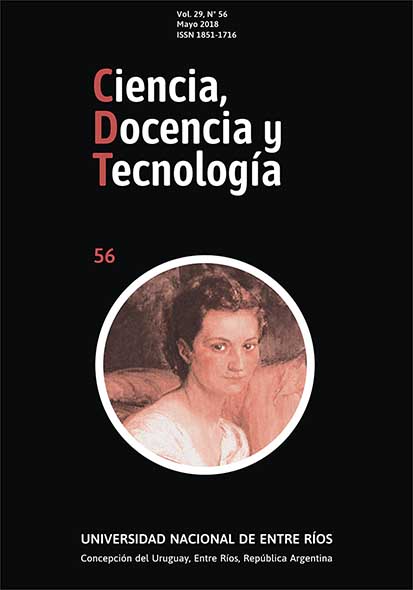Abstract
Scientific writing is the best way to transmit the knowledge acquired, generated or reproduced as a result in a research and when the scientific writing is part of the teaching-learning strategies, it also becomes a great evaluation tool. This article focuses on content presentation of a scientific writing workshop that was offered in graduate school and was adjusted to the undergraduate students. As a result, this study shown that after the workshop one hundred percent of the participants become familiar with the structure (components) of a scientific paper, but there are still deficiencies regarding syntax and consistency that must be improved.
References
Branch, L., & Villarreal, D. (2008, Enero/Abril). Redacción de trabajos para publicaciones científicas. Ecología Austral, 18(1), 1-16.
Cazorla-Perfetti, D. (2013, Enero-Marzo). La redacción de un trabajo científico. Investigación Clínica, 54(1), 111-112. Retrieved from http://www.redalyc.org/articulo.oa?id=372937691010
Diez-Ewald, M. (2011). La Redacción de un trabajo Científico. Investigación Clínica, 52(3), 205-206. Retrieved from http://www.redalyc.org/articulo.oa?id=372937685001
Ecarnot , F., Seronde, M., Chopard, R., & Schiel, F. (2015). Writing a scientific article: A step-by-step guide for beginners. European Geriatric Medicine, 6, 573-579. doi:http://dx.doi.org/10.1016/j.eurger.2015.08.005
Escudero-Sepúlveda, A., Escudero-Sepúlveda, J., & Rodríguez-Morales, A. (2012, Enero-Marzo). La redacción de un trabajo científico. Investigación Clínica, 53(1), 111-112. Retrieved from http://www.redalyc.org/articulo.oa?id=372937687002
Franco, C., & Rodríguez-Morales, A. (2010, Enero). Errores comunes en la redacción científica estudiantil. Gaceta Médica de Caracas, 118(1).
Gutiérrez Escobar, M., López Fernández, R., Sánchez Ortiz, L., Yanes Seijo, R., Rodríguez Arencibia, R., & Molina Gómez, A. (2009, Abril). Curso a distancia para la redacción de artículos científicos. Medisur, 7(2), 12-17. Retrieved from http://www.redalyc.org/articulo.oa?id=180014821002
Llano-Restrepo, M. (2006). Redacción y Publicación de Artículos Científicos. Ingeniería y Competitividad, 8(2), 112-127. Retrieved from en: http://www.redalyc.org/articulo.oa?id=291323467011
Morales, G., & Wheeler, J. (2008). Las desventuras de la redacción científica. Revista electrónica de Veterinaria, IX(12), 1-8. Retrieved from http://www.veterinaria.org/revistas/redvet/n121208/121203.pdf
Osma-Rueda, J., David Pabón, H., & Rueda-Ruíz, N. (2012, Mayo-Agosto). Metodológia en la redacción del resumen de un artículo científico. Revista de la Universidad Industrial de Santander. Salud., 44(2), 67-68. Retrieved from http://www.redalyc.org/articulo.oa?id=343835705010
Rus, D. (2016). A Didactic Approach to Writing Skills in a Technical Learning Environment. Procedia Technology , 22, 1191 – 1196 . doi:doi: 10.1016/j.protcy.2016.01.167
Sabaj, O. (2009). Descubriendo algunos problemas en la redacción de Artículos de Investigación Científica (AIC) de alumnos de posgrado. Revista Signos, 42(69), 107-127.

This work is licensed under a Creative Commons Attribution-NonCommercial-ShareAlike 4.0 International License.
Copyright (c) 2018 MARIA FERNANDA SERRANO GUZMAN, Diego Darío Pérez Ruiz, Norma Cristina Solarte Vanegas, Luz Marina Torrado Gómez

